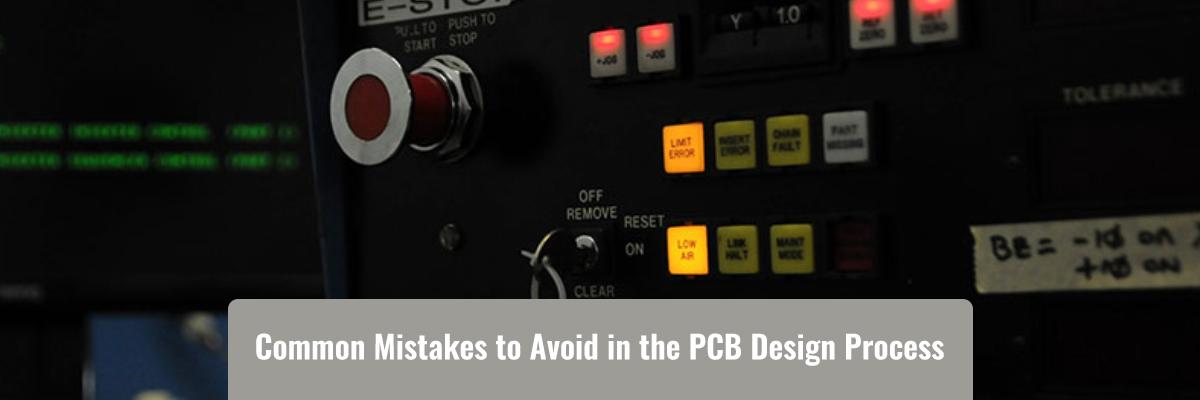7 Common Mistakes to Avoid in the PCB Design Process

7 Common Mistakes to Avoid in the PCB Design Process
A Printed Circuit Board (PCB) is an electronic component that connects different electronic components together. Designing a PCB is an intricate process, which requires a lot of precision. This is a process in which most common mistakes are bound to occur. What are these common mistakes? How to avoid them?
Common PCB Design Mistakes
Here are some of the most common mistakes committed while designing a PCB. Have a look at them and make sure, you avoid these mistakes.
-
Choice of Wrong Designing Tool: Choice of the right tool is one of the most important and fundamental steps for a successful PCB design. Choosing a wrong or inefficient tool for designing will only create problems such as delayed time in the creation of design, and increased manufacturing costs. Thus, it is always recommended to select the tool that best suits your PCB designing requirements. There are a number of easy to use electronic design automation (EDA) software packages available to choose from. So, it is always wise to do proper homework and analysis and select the tool that best suits your needs.
-
Incompetent Layout Techniques: PCB designers are required to layout complex designs for designing smaller and faster devices. With growing requirement for circuits with minimal footprints, PCB designers are required to use smaller components, which reduce the footprint. Generally, these components are placed closer to each other. If you select a layout technique that is incompetent, then there is a danger of connections going wrong or not as desired. Therefore, while working with components with a smaller pitch and higher pin count, it is very important to select a suitable board layout technique.
-
Improper Thickness of Copper: One ounce of copper is often selected by many designers as a finished thickness. One ounce of copper often fails to confirm adequate plating in the holes. To ensure that your design is successful, you have to be specific when it comes to the required parameters. For a successful design, it is recommended to select copper with a finished thickness of 1 to 2 ounces per square ft.
-
Incorrect Placement of Decoupling Capacitors: Decoupling capacitors are the equipment that help maintain a stable voltage. These capacitors are present on the power supply rail. To be effective, these capacitors should be placed very close to the pin that requires stable voltage. The capacitors will not work properly, if they are placed incorrectly and far from the pin requiring stable voltage.
-
Failure to Backup Your Work: To achieve perfect results during the PCB design process, different software and data are used. For example, the EDA software helps designers create complex PCB designs. Due to the high flexibility and speed of the software, the data can be lost easily even before you save them. To avoid this, always make sure to save your data often. It is advisable to create save points so that even if one storage point gets corrupt, the others are still secured and saved.
-
Lack of Design Reviews: Design review is also considered as one of the most vital elements in a PCB design process. Design reviews involve reviewing design features, the functioning of the PCB, as well as interconnection of the circuits. Design reviews are of great help in avoiding the most common design mistakes. Besides, it is always good to have some other people review the design as he/she may find some mistake that earlier went unnoticed.
-
Lack of Communication: Fatigue, stress, and multitasking are the factors that can affect productivity. These factors lead to miscommunication, which can cause increased operation time and cost. To avoid all this, it is advisable to have proper communication, which would give circuit designers the actual time required for designing. This can further help in achieving the promised date of delivery.
These are some of the most common mistakes that can take place during the PCB design process. Make sure that you follow all the points mentioned above. These points will help you design a successful PCB in the first attempt. If you fail to take into account the aforementioned points, then there are chances of you ending up with costly, ineffective prototype, which takes a longer time to reach the market.
.png)

